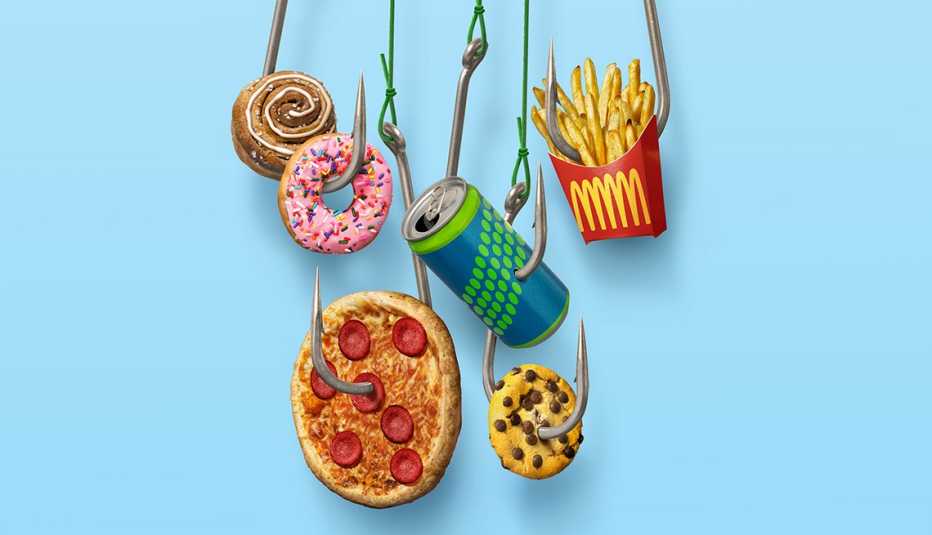Staying Fit


Michael Prager doesn’t go near junk food.
After he eats a frozen pizza, candy bar or packaged pastry, his head will throb. A sheen of sweat will appear on his face and body. Then, a craving will hit.
“When my body has finally gone through it all, it starts saying, Hey, why can’t I have some more? Let’s have some more. Let’s have some more,” he says.


AARP Membership— $12 for your first year when you sign up for Automatic Renewal
Get instant access to members-only products and hundreds of discounts, a free second membership, and a subscription to AARP the Magazine.
Prager, 65, a retired journalist and author in Arlington, Massachusetts, is not alone. One in 8 adults ages 50 to 80 show signs of addiction to ultraprocessed foods, or what we call junk food — sugary sodas, salty chips and fatty fast food — according to a 2023 report from the National Poll on Healthy Aging, sponsored by AARP. Nearly half of older adults experience at least one symptom of junk food addiction, such as intense cravings, an inability to stop eating once they start, or withdrawal symptoms when they try to resist.
“In the same way that taking that first sip of alcohol can prime [some people] to want more, we see that same thing with these foods,” says Ashley Gearhardt, a coauthor on the poll and director of the Food and Addiction Science & Treatment Lab at the University of Michigan.
Addictive by design
Minimally Processed Foods
- Steel-cut oats
- Salmon filet
- Barley
- Fresh fruit
- Potatoes
Highly Processed Foods
- Sugary cereal
- Frozen fish sticks
- Canned ravioli
- Fruit juice
- Baked potato chips
Nearly all foods go through some level of processing — beans are dried or canned; spinach is washed and bagged. But the term “ultraprocessed” refers to foods that have been altered by the addition of super-flavoring agents to create irresistible tastes; preservatives to prolong shelf life; food dyes to alter hues; and refined fats and carbohydrates that have been stripped of fiber and other nutrients to improve their texture and appearance.
Sweet, salty, crunchy, creamy fare: From candy bars to chips, from cookies to pastries, these foods have been created to be hyper-palatable so that you’ll come back for more. And it’s easy to do just that, considering they’re all around us. They line checkout counters in gas stations and grocery stores, and they’re stuffed in vending machines at high schools and hospitals.
“Basically, the whole environment is set up to induce craving [junk food],” says Alexandra DiFeliceantonio, a neuroscientist at the Fralin Biomedical Research Institute at the Virginia Tech Carilion School of Medicine, who studies how the brain guides our food choices.
And they’re cheap. “Healthy food is so much more expensive, and there are people who can’t afford it,” says addiction specialist Nora Volkow, M.D., director of the National Institute on Drug Abuse, part of the National Institutes of Health (NIH). Federal data shows that nearly 19 million people in the U.S. lack access to fresh, healthy foods. “If you don’t have any choices, what do you do?” Volkow says.




































































More on Health
A Doctor Explains Why Healthy Fats Are Good for You
5 high-fat foods that won’t make you gain weightWhat Is Actually Good for Your Gut?
Certain foods and supplements are marketed to help improve your gut microbiome. But what is that, exactly, and do they work?8 Surprisingly Fattening Foods
These can make you pack on the pounds if you’re not careful